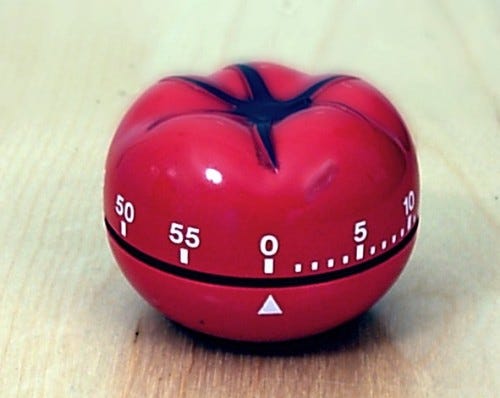There is nothing quite like focused undistracted work on one thing at a time. But sometimes, focus can be fleeting.
This week I had some major preparation to complete for an upcoming workshop series. On one particular day, I knew I needed to maintain my focus for longer than usual because much of my work at present involves research and writing in preparation for speaking events, workshops, and training series.
After four hours of high-focus work early one morning, my brain was already fatigued, and I still had three hours of high-concentration work in front of me.
Fortunately, I’d just read a story about psychologist/author Paul Bloom who discovered his optimal focus time was 6-minutes, which he could run on repeat throughout the day to keep himself on track and productive. I liked the idea of reducing the focus time and having more brief breaks, so I decided to give it a shot.
Instead of 6-minute increments, I found my capacity was 15 minutes so I set the timer on my phone, ensured all electronic alerts were off, and started.1
It worked a treat.
By decreasing the pressure on myself to stay focused for a full 3 hours, my mind snapped back into gear knowing I only had to concentrate for the next 15 minutes. When my timer went off, I took a 5-minute walk outside and then got back to it.
When you have to focus, try decreasing the time allocation into manageable smaller chunks. It can be a useful method for increasing productivity.
Ray
ray@rayhodge.com.au; www.rayhodge.com.au; +61 403 341 105
Connect with me on LinkedIn
This process is known as the Pomodoro technique - Pomodoro meaning “tomato” in Italian. It was created by Francesco Cirillo who used a tomato-shaped kitchen timer to help with his study schedule.
*Photo by vungoctho - Own work, CC BY-SA 4.0, https://commons.wikimedia.org/w/index.php?curid=62687889





I'll give it a try, thank you